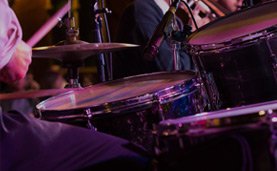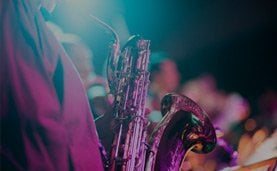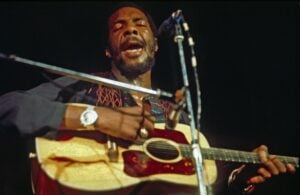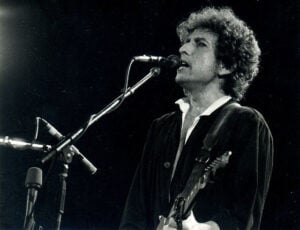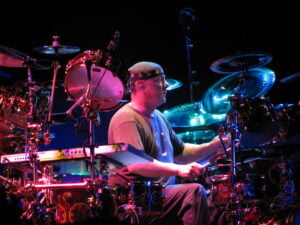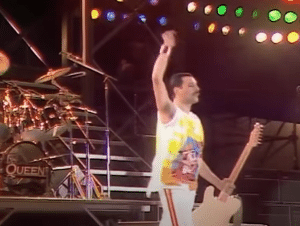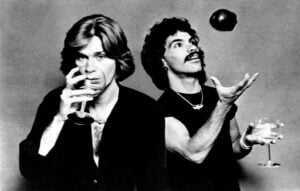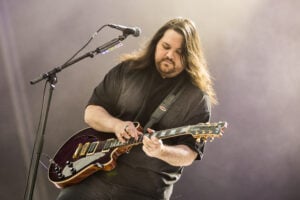12 Classic Rock Covers That Prove They’re Better Than the Classics
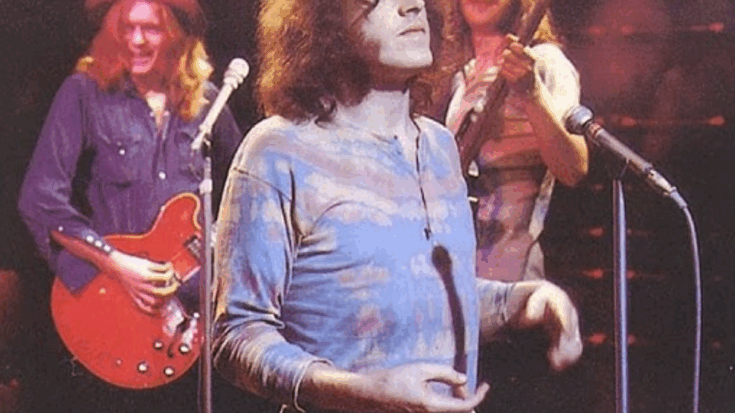
via The Organologist / YouTube
Cover songs often show how powerful the original tracks really were. Some bands start out by covering popular songs, hoping to catch attention before sharing their own material. Others simply admire a track and want to perform it their own way. Either way, covers show how songs grow across generations.
Classic rock bands have created some of the most memorable covers in music. When older songs are reworked with heavier guitars and fresh energy, they sometimes reach new audiences who might not even realize the track isn’t original. The list below includes 12 classic rock covers that go beyond imitation and become the version most people remember.
12. “Signs” by Five Man Electrical Band (1970) – Covered by Tesla (1990)
Five Man Electrical Band released “Signs” as a B-side in 1970. It became a surprise hit after being promoted to the A-side the following year, reaching #3 in the U.S. and #4 in Canada. The lyrics came from Les Emmerson’s reaction to billboards covering Route 66 during a road trip.
Tesla reworked the song 20 years later, stripping away the intro and jumping right into the lyrics. Their acoustic performance brought a raw, live feel to the song and changed the delivery in a major way. They also added some bold lyrics, giving it an explicit edge. This version became a standout track from their Five Man Acoustical Jam album.
11. “Helter Skelter” by The Beatles (1968) – Covered by Pat Benatar (1981)
The Beatles’ “Helter Skelter” helped lay the groundwork for heavy rock. Paul McCartney’s rough vocal tone and the long instrumental outro made it one of their boldest tracks. The band had reached a stage where they could take chances with sound and song structure.
Pat Benatar’s cover in 1981 stands out for its strong vocals and confident energy. She hit the high notes while keeping the original song’s intensity. Her version kept the long instrumental fadeout and added a new layer that fit right into 1980s rock. It’s one of the most respected Beatles covers from that decade.
10. “Twist and Shout” by The Isley Brothers (1962) – Covered by The Beatles (1963)
“Twist and Shout” was first recorded by The Top Notes, but The Isley Brothers turned it into a hit in 1962. Their version was full of energy, with strong vocals and simple, effective backing music. It gave the song a lasting spot in 1960s rock history.
The Beatles took it one step further. Their version, recorded in a single take, brought even more power. John Lennon’s raw vocals made the song explode with excitement. It reached #2 on the Billboard Hot 100 and is still known as one of their most electrifying early tracks.
9. “Johnny B. Goode” by Chuck Berry (1958) – Covered by Judas Priest (1988)
Chuck Berry’s “Johnny B. Goode” is one of the most iconic early rock songs. Its guitar riff and story about a rising star helped define the genre. It also became a highlight of Berry’s live shows and earned a spot in the first Rock and Roll Hall of Fame ceremony in 1986.
Judas Priest’s 1988 cover gave it a gritty twist. The heavy metal band kept the riff but added sharper guitars and a harder beat. While some fans still prefer the original, Priest’s version brought the song into a new era without losing its core spirit.
8. “I Shot the Sheriff” by Bob Marley (1973) – Covered by Eric Clapton (1974)
Bob Marley’s original version of “I Shot the Sheriff” had a slow reggae groove and lyrics about justice and standing up to authority. The track appeared on the Burnin’ album and became one of his more widely known songs in the U.S.
Eric Clapton released his cover just one year later. His version leaned more into soft rock while still keeping the reggae rhythm in the background. It became a hit, climbing to #1 on the Billboard Hot 100. In 2003, his version was added to the Grammy Hall of Fame.
7. “Lucy in the Sky with Diamonds” by The Beatles (1967) – Covered by Elton John (1975)
The Beatles originally recorded “Lucy in the Sky with Diamonds” with dreamlike vocals and unusual instruments. John Lennon said it was inspired by a drawing his son made and by Lewis Carroll’s Alice in Wonderland books. It became one of their best-known psychedelic tracks.
Elton John’s 1975 version gave the song a new feel. It featured piano, horns, and a richer rock arrangement. It sounded more grounded but still magical, blending well with his other hits like “Rocket Man.” Lennon even played guitar on Elton’s version, adding to its appeal.
6. “Cum On Feel the Noize” by Slade (1973) – Covered by Quiet Riot (1983)
Slade’s version of “Cum On Feel the Noize” hit #1 in the UK in 1973. It had a fun, shout-along chorus and raw energy, but didn’t break through in the U.S. as strongly. The band was already well-known in England but couldn’t get the same traction across the Atlantic.
Quiet Riot changed that in 1983. They kicked off the song with the chorus and delivered it with full metal power. Their version reached #5 on the Billboard Hot 100 and helped launch their album Metal Health to major success in the U.S.
5. “Smokin’ in the Boys Room” by Brownsville Station (1973) – Covered by Mötley Crüe (1985)
Brownsville Station released “Smokin’ in the Boys Room” in 1973, and it reached #3 in Canada and the U.S. The song followed a spoken-sung style that pulled listeners into a story about teens breaking school rules. It had a simple, catchy hook that made it stand out.
Mötley Crüe covered the song in 1985 with a more aggressive style. Their version climbed to #16 on the Billboard charts and came with a music video that matched the rebellious tone. For many fans, this version became the one they remembered.
4. “With a Little Help from My Friends” by The Beatles (1967) – Covered by Joe Cocker (1969)
Ringo Starr originally sang “With a Little Help from My Friends” as part of Sgt. Pepper’s Lonely Hearts Club Band. It had a light, fun feel that matched the album’s upbeat tone. The lyrics were about friendship and support.
Joe Cocker’s 1969 version flipped the tone. He slowed it down and added a blues-rock sound with emotional vocals and a powerful build-up. Backed by strong instrumentation and backing vocals, his cover became a huge hit, especially after being featured at Woodstock.
3. “All Along the Watchtower” by Bob Dylan (1967) – Covered by Jimi Hendrix (1968)
Bob Dylan’s “All Along the Watchtower” was quiet and thoughtful, filled with metaphor and acoustic guitar. The lyrics described a conversation between two characters looking at the world around them. It was a standout track on John Wesley Harding.
Jimi Hendrix changed the song entirely. His 1968 cover was louder, longer, and filled with electric guitar solos. It appeared on Electric Ladyland and became the most famous version. Dylan even began performing it in Hendrix’s style after hearing it.
2. “I Love Rock ’n Roll” by The Arrows (1975) – Covered by Joan Jett & The Blackhearts (1981)
The Arrows wrote and recorded “I Love Rock ’n Roll” in 1975, but it didn’t become a big hit. The song had potential, but it never caught on fully with the public. Most listeners today don’t even realize it wasn’t Joan Jett’s original.
Joan Jett released her version in 1981 and turned it into a chart-topping hit. Her vocals were strong and confident, and the band’s energy made the track feel like a stadium anthem. It stayed at #1 on the Billboard Hot 100 for seven weeks.
1. “You Really Got Me” by The Kinks (1964) – Covered by Van Halen (1978)
The Kinks’ original “You Really Got Me” had sharp guitar riffs and a cool vocal style. It was an important early rock song and reached #1 in the UK and #7 in the U.S. It also influenced future rock bands with its raw energy.
Van Halen’s 1978 cover took everything further. They added powerful guitars, energetic drumming, and a faster pace. It became their first single and helped launch their career. Many fans now think of Van Halen’s version first—it became the one that truly rocked.



